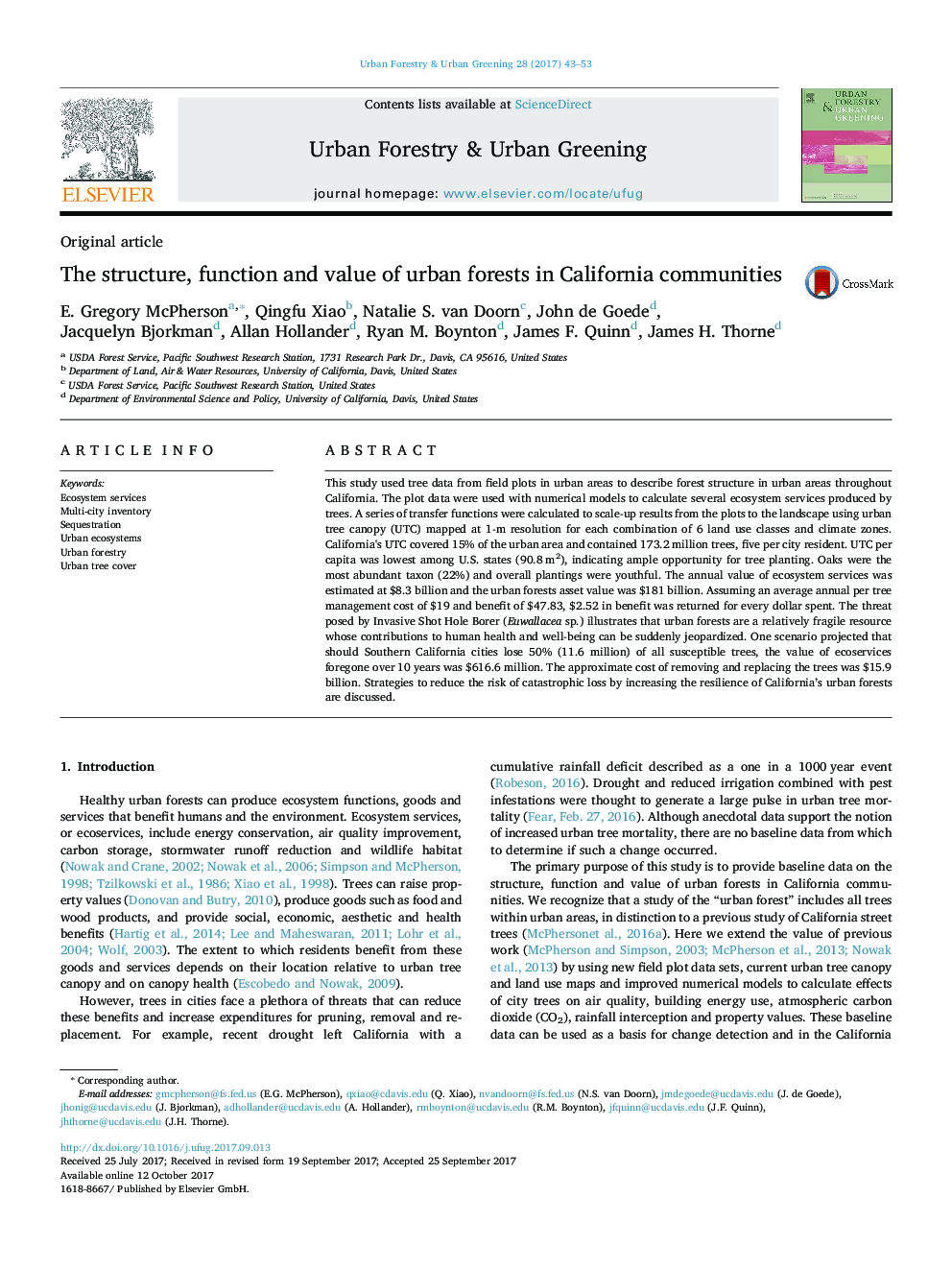| Article ID | Journal | Published Year | Pages | File Type |
|---|---|---|---|---|
| 6549518 | Urban Forestry & Urban Greening | 2017 | 11 Pages |
Abstract
This study used tree data from field plots in urban areas to describe forest structure in urban areas throughout California. The plot data were used with numerical models to calculate several ecosystem services produced by trees. A series of transfer functions were calculated to scale-up results from the plots to the landscape using urban tree canopy (UTC) mapped at 1-m resolution for each combination of 6 land use classes and climate zones. California's UTC covered 15% of the urban area and contained 173.2 million trees, five per city resident. UTC per capita was lowest among U.S. states (90.8Â m2), indicating ample opportunity for tree planting. Oaks were the most abundant taxon (22%) and overall plantings were youthful. The annual value of ecosystem services was estimated at $8.3 billion and the urban forests asset value was $181 billion. Assuming an average annual per tree management cost of $19 and benefit of $47.83, $2.52 in benefit was returned for every dollar spent. The threat posed by Invasive Shot Hole Borer (Euwallacea sp.) illustrates that urban forests are a relatively fragile resource whose contributions to human health and well-being can be suddenly jeopardized. One scenario projected that should Southern California cities lose 50% (11.6 million) of all susceptible trees, the value of ecoservices foregone over 10 years was $616.6 million. The approximate cost of removing and replacing the trees was $15.9 billion. Strategies to reduce the risk of catastrophic loss by increasing the resilience of California's urban forests are discussed.
Related Topics
Life Sciences
Agricultural and Biological Sciences
Forestry
Authors
E. Gregory McPherson, Qingfu Xiao, Natalie S. van Doorn, John de Goede, Jacquelyn Bjorkman, Allan Hollander, Ryan M. Boynton, James F. Quinn, James H. Thorne,
